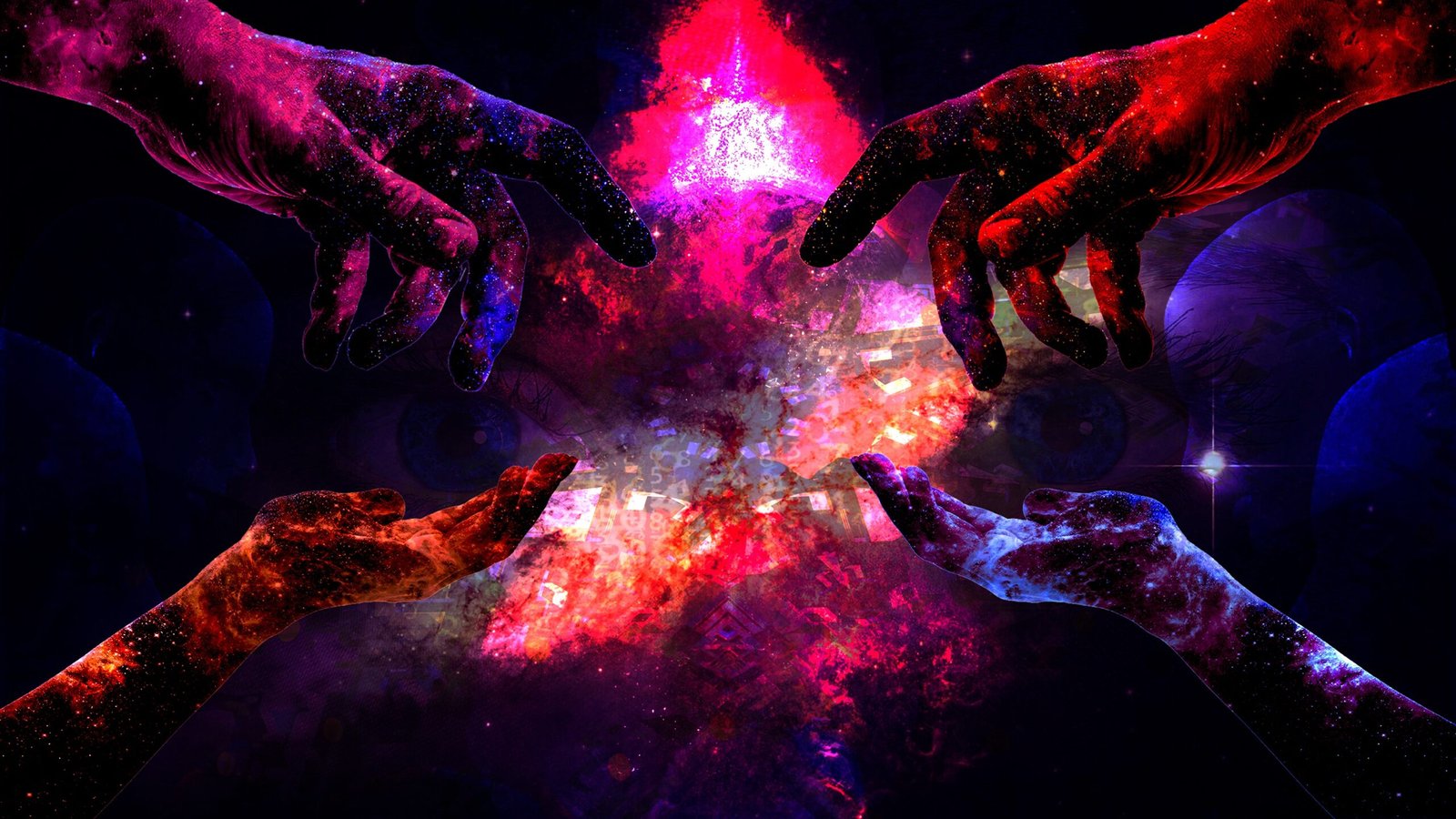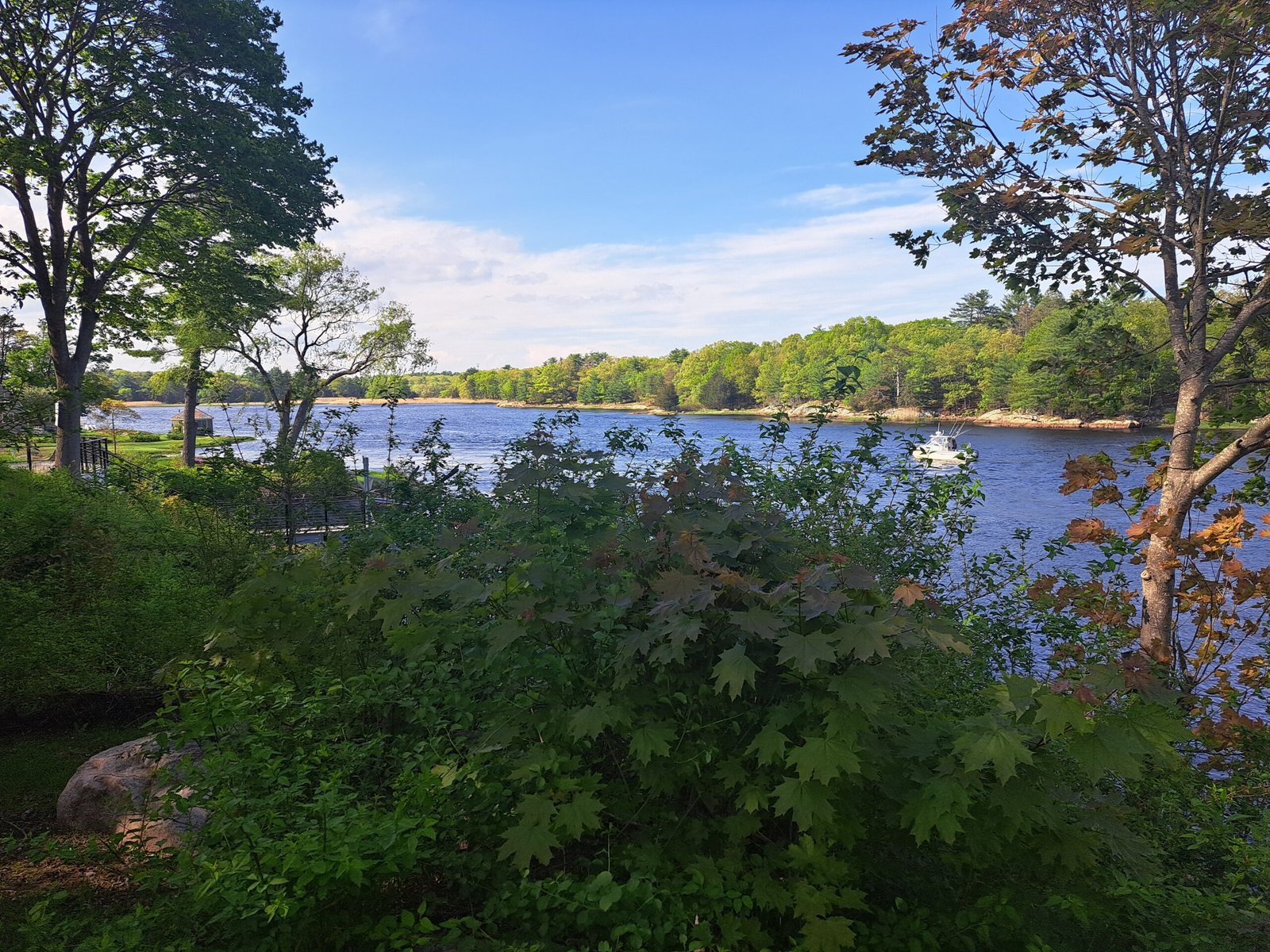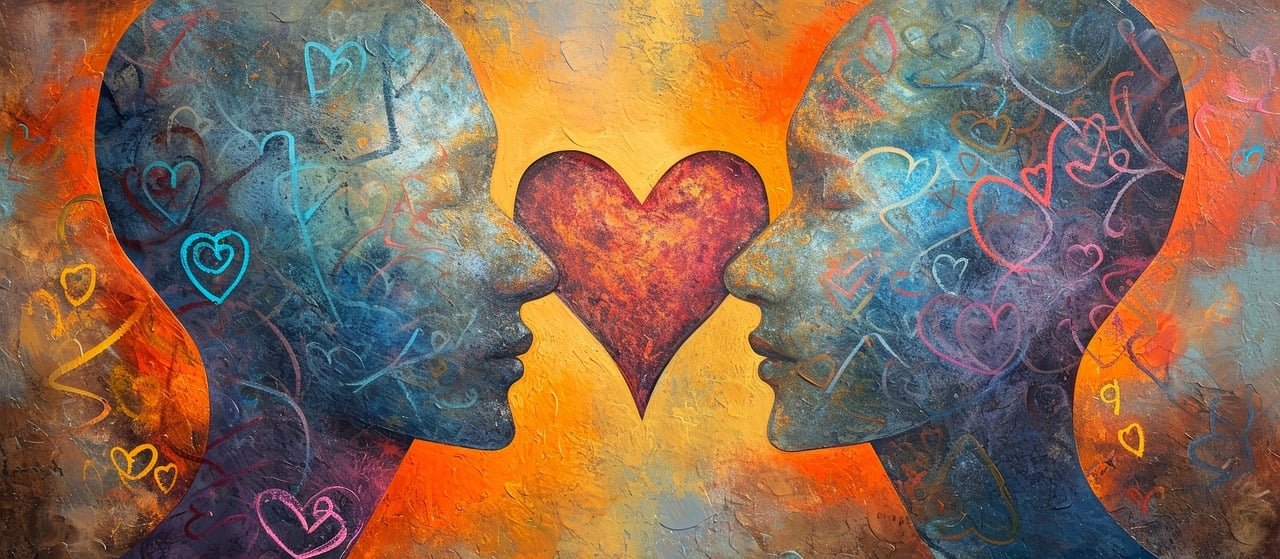The doctrine of the impermanence of form has been interpreted as a denial of reality and biology. This couldn’t be farther from the truth.
Buddhist teacher and activist Thich Nhat Hanh passed away in January. As I was musing on his teachings, I became curious about something I knew nothing about: his love life.
It seems nosey, but Nhat Hanh has always struck me as extraordinarily serene and chaste, without coming across as puritanical or repressed. Had he ever married? In his 1962-66 journals, published in Fragrant Palm Leaves, Nhat Hanh writes movingly about a close friendship with Steve, his flatmate in Princeton, New Jersey. Was Nhat Hanh homosexual? Had he been in love? Did the monk’s vow of chastity make him suffer in any way? Or had he done that thing that many people assume Buddhists aspire to do, and transcended sex altogether?
My curiosity led me to a beautiful and lesser-known book of Nhat Hanh’s, Cultivating The Mind Of Love (1996), in which he shares his experience of falling in love at age 24. “Monks do not usually share stories like this,” he wrote, “but I think it is important to do so.” In the book Nhat Hanh uses the story as a Dharma teaching.
He had been giving a course on Basic Buddhism at the Temple of Complete Awakening in the highlands of Vietnam, in 1950 or ’51. “More than anything else,” he wrote, “I wanted to renew Buddhism in my country, to make it relevant to the needs of the young people.” Whilst at the temple, he met a young nun, “as peaceful as the Buddha sitting on the grass … The moment I saw her, I recognised in her everything I cherished.” At first, Nhat Hanh could not fathom the disturbance inside him after meeting this woman: he couldn’t concentrate, and hardly slept. They shared dinner, and Nhat Hanh read some of his poetry to her. “[I]nside I understood. I knew that I loved her. I only wanted to be with her — to sit near her and contemplate her.”
As they continued to meet and talk, they found they “shared the same ideals,” and it became clear the affection was mutual. Nhat Hanh began helping the young nun (she was 20) with her studies and translation work. Despite his feelings, he
never even had the idea to hold her hands in mine or to kiss her on the forehead … For our lives to continue, I could not be less than a monk nor she less than a nun … it was impossible for me to open my door, walk to her room, and knock at her door. That would have destroyed everything.
Finally, another nun finds out about the feelings the two Buddhists share, and tells the woman to leave Nhat Hanh’s company for Hanoi. She obliges — not out of obedience, but a commitment to her ideals. Nhat Hanh was “overwhelmed by sadness” at the news she was leaving, and remembers the moment they parted:
She stood up, came close to me, took my head in her arms, and drew me close to her in a very natural way. I allowed myself to be embraced. That was the first and last time we had any physical contact. Then we bowed and separated.
Who knows what this woman sparked inside Nhat Hanh, and how it sustained him in the years to follow, as he developed the philosophy of “socially engaged Buddhism” for which he is known, and lived in exile from the time of the Vietnam war. In those initial months when the pain of separation eased:
… we were able to grow, to see things differently, and our love became more mature. The element of attachment … lessened, allowing compassion and loving kindness to flower. Separation did not destroy our love. It strengthened it …
… Over time, my love for her did not diminish, but it was no longer confined to one person. I was supporting hundreds of monks and nuns, and since that time we have become thousands, yet that love is still here, stronger and larger.
This is the nature of a sincere Buddhist’s commitment: it is not transcendence or denial of sex, or the substitution of affection for a manufactured numbness or disciplined indifference. Rather, Nhat Hanh’s story is one of feeling, devotion, acceptance, and a willingness to experience difficulty in order to walk the path of spiritual liberation. After telling this story in Cultivating the Mind of Love, Nhat Hanh moves on to share one of the Buddha’s valuable teachings, the Snake Sutra:
According to the Snake Sutra, we have to be careful when we study the Dharma, because if we understand it incorrectly, we can cause harm to ourselves and others. The Buddha said that understanding the Dharma is like trying to catch a snake. If you grab the snake by its body, it can turn around and bite you. But if you know how to catch it by pinning it down behind its head with a forked stick, it will not harm anyone.
This warning is as relevant today as it was at first delivery. Among the Buddha’s most misunderstood teachings, those which inspired him to give the Snake Sutra, was the principle that “physical form is not-self.” Today, the rise of transgenderism and its favoring of identity over biology indicates that we are still picking up this teaching recklessly, ‘by its body’. Transactivists refuse to acknowledge that biological sex is natural or women are female because they find these facts reductionist. They believe that if sex cannot be changed or superseded by some sort of mould-breaking identity, it must mean that ‘biology is destiny’, an unbearably restrictive prospect. But anyone who reasons this way, and tries to improve their destiny by denying their body, is bound to be bitten.
The Buddha’s teachings dissuade us from cultivating an overly precious self-image or special identity to project onto our ever-aging and already perfectly miraculous bodies. It is a bit like being advised not to get a tribute to your favorite band tattooed on your forearm when you are sixteen: human beings grow and change. We also die, and so the Buddha suggested we don’t cling to our self-concept, circumstances, or bodies as if we must permanently consolidate and secure what is inherently fleeting and mortal. These are the kinds of teachings the Buddha advised followers to handle with care, as Nhat Hanh explains:
One time, before going on a personal trip to Vaishali, the Buddha gave a Dharma talk about impermanence, the impurity of the body, and nonself. Some monks misunderstood him and said, “This life is not worth living. Everything is impure and must be abandoned.” Then, after the Buddha left for his retreat, several of them committed suicide right in the monastery where the Buddha had spoken.
Needless to say, that was not the intention.
The misconception that spiritual awakening involves rejecting the body is so common that many spiritual teachers, past and present, have addressed it. Consider the following story, told by the spiritual teacher Krishnamurti to theologian Allan Anderson (AA) in 1974, concerning a monk who left home at fifteen to renounce household life, put on the robe, and find God:
Krishnamurti: As he began to grow older – at 18, 19, 20 – sexual appetite was something burning. He explained to me how it became intense – [but] he had taken a vow of celibacy, as sannyasins do. Monks do. And he said, day after day, in my dreams, in my walk[s]… going [house] to house, begging, this thing was becoming so – like a fire. Do you know what he did to control it?
AA: No, no. What did he do?
K: He had it operated … His urge for God was… [about] the idea, the idea – not the reality…
So he came to see me… in tears…
I’ve met so many – not such extreme forms of control and denial – but others that tortured themselves for an idea. For a symbol, for a concept … And I’ve sat with them and I’ve discussed with them – and they begin to see what they have done to themselves.
If we compare the Buddha’s teachings with one of the oldest texts of Chinese philosophy, the Tao te Ching, an overriding message is that “[i]t is not that life changes – change is life … Change is the wonder of life.” The purpose of this message is not to encourage us to deny our bodies, nature, or the material world, or manipulate or destroy them, since ‘nothing really exists’. The point is that life is an organic process. We are encouraged to experience our bodies as an “organic physical process,” not as objects upon which to fix an identity, nor as some sort of substanceless mirage. According to Nhat Hanh:
Buddha said, “Well, you think that there is an identity, an absolute identity in things. I say that things are empty, that kind of identity does not exist. If you look for an absolute identity of a chair, I say that it is empty.” Then people began to worship the idea of emptiness; He said, “It is worse if you believe in the nonself of a chair than if you believe in the self of a chair.” Do you see? It is not the words and the concepts that are important but something within; the way to deal with things, to be with humans, is important.
In a 2021 interview with Russell Brand, scientist and ecofeminist Vandana Shiva explains this same idea in the language of Hinduism. She says, “we live in a divine universe and the energy of this universe is a divine feminine: Shakti. And nature, prakrti, is her first action.” She goes on to elucidate the concept of maya, which denotes the ever-changing physical world, saying we should consider “maya as play, but not maya as illusion. Maya as play, when you realise you’re in a sacred universe.”
Sadhguru, founder of one of the world’s most renowned schools of yoga, the Isha Foundation, writes about this same misconception in Inner Engineering: A Yogi’s Guide to Joy (2016). He tells an amusing story about his favourite wise fool, Shankaran Pillai, that reminds me of transactivists who use any idea they can get their hands on, whether metaphysical, spiritual, or pseudoscientific, to justify claiming a ‘non-binary’ or opposite sex identity. They might declare that “I contain multitudes,” or “quantum physics helped me understand my queer identity.”
One afternoon Shankaran Pillai went to a class in Vedanta, which is a school of Indian metaphysics that concerns “nonduality of the self and the divine.” He became very excited when the teacher declared:
You are not just ‘this’ or ‘that’. You are everywhere. There is nothing like ‘yours’ and ‘mine’. Everything is you. Everything is yours. In essence, everything is one. What you see, hear, smell, taste, touch, is not reality – it is all maya, all illusion.
When he left class to go home, this “unbeatable Vedanta rhetoric was buzzing in Shankaran Pillai’s head,” and it was still there when he sprung out of bed the next morning. “There is nothing which is not mine!” he hollered. “Everything is mine, everything is me, everything is maya!” With a spring in his step, he walked to his favourite local restaurant for breakfast. As he ate, he thought about how he was the food, and the fork and the plate, and they were all him. When he finished he rose from his seat and, passing by the counter, noticed that the waiter had left the till open while distracted by a chore. “Everything is mine,” Shankaran Pillai thought. “You cannot differentiate between ‘this’ and ‘that’.” So he pocketed a wad of cash from the till, and left the premises.
Several patrons saw him and ran outside, but Shankaran Pillai yelled back at them: “Who are you trying to catch? You are the catcher and the caught. What you catch is you – one that catches is also you. When there is no such thing as ‘you’ and ‘me’ – who can I pay?” By that stage, the café owner had caught up to Pillai, and, not knowing how to deal with such a customer, he took him to court – where, as you might have anticipated, Pillai continued his Vedanta. The judge tried every means to explain to Pillai that he had committed theft, to no avail. So:
The judge gave up and said, “Okay, ten lashes on the backside.”
First lash… Shankaran Pillai screamed.
The judge said, “Don’t worry. It is all maya anyway. There is no such thing as pain and pleasure. Everything is maya.”
…Third lash… Shankaran Pillai hollered, “Stop stop!”
“There is no such thing as starting and stopping. It is all maya.”
Sadhguru concludes, “before the ten lashes were done, Vedanta had been cleaned right out of Shankaran Pillai.”
In the same text, Sadhguru specifically debunks sex denialism. First he distinguishes between sex and sexuality, saying that “[s]ex is a natural thing – it is physical,” whereas sexuality is “psychological.” He writes about how sex-obsessed we have become, at a time when,
probably ninety per cent of human energy is being spent either pursuing or avoiding sex… [and] we have made such a distinction between ‘man’ and ‘woman,’ almost as if they are two separate species. No other creature on the planet has the kind of problems with sex that humans have.
How did we get to this point? Well:
in the past, many religions went about denying a simple, physical process to the extent of making it ‘sinful.’ Because we could not even accept the biology of a human being … we tried to deny it. If we had no problem with biology … everybody would be known for what they are worth. Whether somebody is male or female would be irrelevant. The whole exploitation of women starts once you cannot accept the fundamental differences between a man and a woman.
You do not have to make biology sacred, nor do you have to make it filthy. It is an instrument of life. Because of it, you exist. If you know how to live it without elevating it or making it ugly, it has a beauty of its own … denial is not the answer.
Eckhart Tolle, another contemporary spiritual teacher, and author of the bestselling Power of Now (2004), shares Sadhguru’s lamentations about how “the ‘you are not your body’ belief has prevailed universally, leading to body denial and attempts to escape from the body.” He says: “[t]he fact is that no one has ever become enlightened through denying or fighting the body or through an out-of-body experience … Transformation is through the body, not away from it.”
The challenge, then, is to avoid identifying with maya, with the organic processes we live and see before us,to the extent that we cannot handle natural processes, change, or the passing away of things, and try to objectify, consolidate, control, manipulate, and destroy that very life we are truly ‘one’ with. These habits make us suffer. So – spiritual teachers encourage us to break this kind of unnatural attachment, identity projection, and resistance to change, so that we can free ourselves enough to experience life directly, without our own selves in the way. But this detachment from the physical and material is not the same as denial of it, as Nhat Hanh wrote:
I am sure that heaven has areca, starfruit, lime, and grapefruit trees. I laugh when I think how I once sought paradise as a realm outside of the world of birth and death. It is right in the realm of birth and death that the miraculous truth is revealed.








Article Discussion